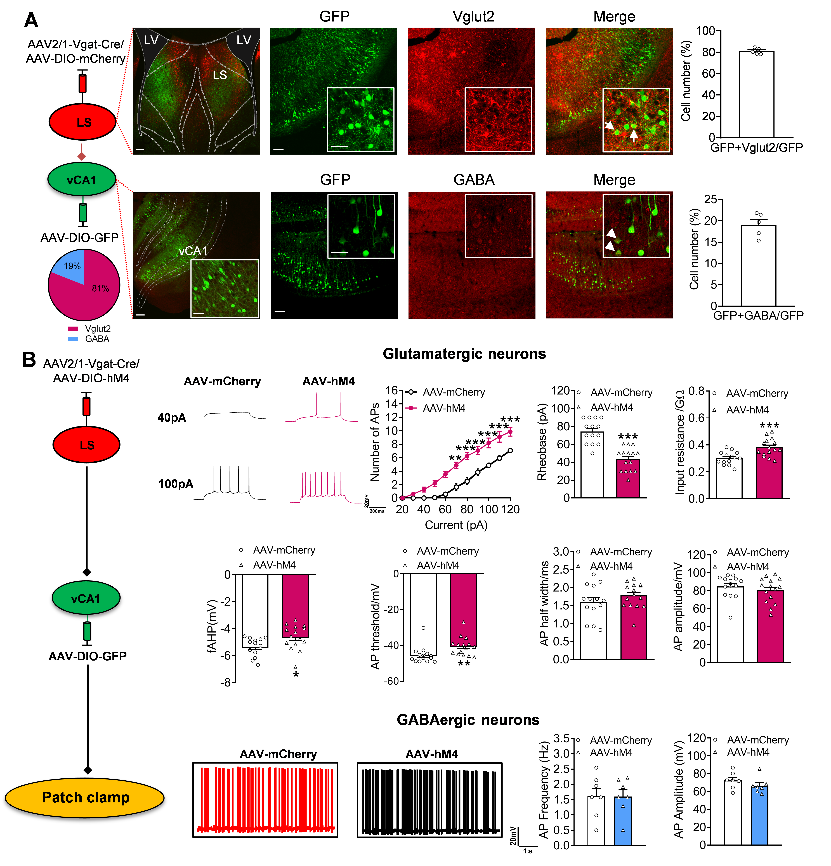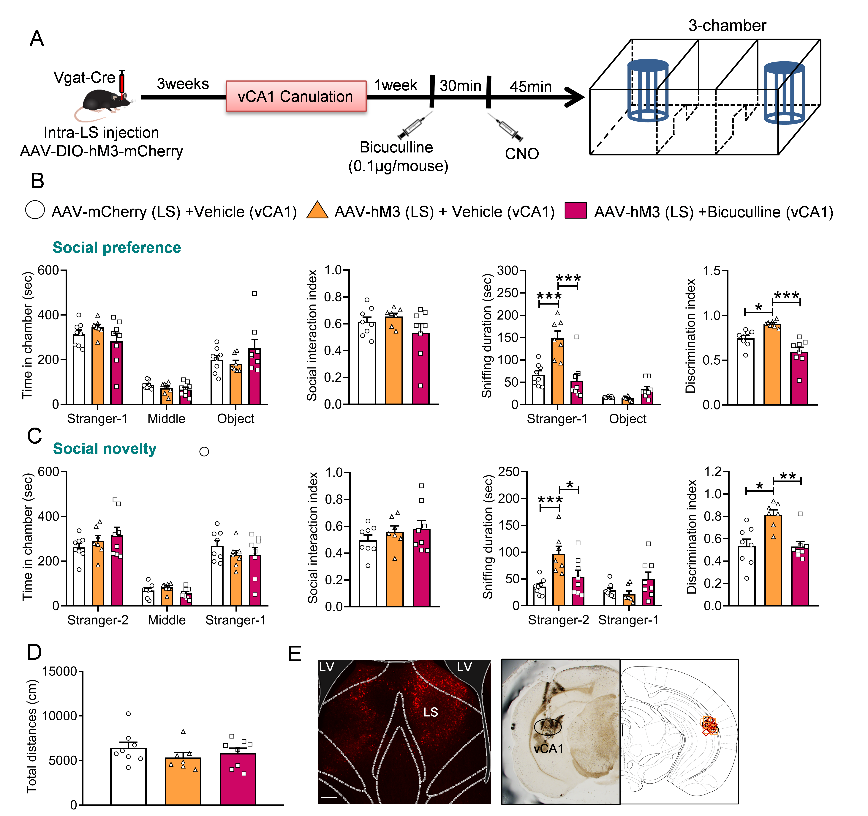中国神经再生研究(英文版) ›› 2024, Vol. 19 ›› Issue (8): 1789-1801.doi: 10.4103/1673-5374.389304
外侧隔核向海马腹侧CA1区的投射如何影响社交能力
How do lateral septum projections to the ventral CA1 influence sociability?
Dan Wang1, 2, 3, 4, #, Di Zhao1, 2, 3, 4, #, Wentao Wang1, 2, 3, 4, Fengai Hu1, 2, 3, 4, Minghu Cui2, 3, 4, Jing Liu1, 2, 3, 4, Fantao Meng1, 2, 3, 4, Cuilan Liu1, 2, 3, 4, Changyun Qiu1, 2, 3, 4, Dunjiang Liu1, 2, 3, 4, Zhicheng Xu1, 2, 3, 4, Yameng Wang1, 2, 3, 4, Yu Zhang2, 5, *, Wei Li1, 2, 3, *, Chen Li1, 2, 3, 4, *#br#
- 1Department of Rehabilitation Medicine, Binzhou Medical University Hospital, Binzhou, Shandong Province, China; 2Medical Research Center, Binzhou Medical University Hospital, Binzhou, Shandong Province, China; 3Institute for Metabolic & Neuropsychiatric Disorders, Binzhou Medical University Hospital, Binzhou, Shandong Province, China; 4Department of Psychology, Binzhou Medical University Hospital, Binzhou, Shandong Province, China; 5College of Nursing, Binzhou Medical University, Binzhou, Shandong Province, China
摘要:
社会功能障碍是多种神经精神疾病的危险因素。既往研究显示外侧隔核相关通路在介导社会行为中起着至关重要的作用,然而,外侧隔核及相关脑区之间的连接在社会行为方面的确切功能作用尚不清楚。此次实验在小鼠中使用电生理和化学遗传学方法进行了三箱实验,以确定外侧隔核向海马腹侧CA1区的投射如何影响社交能力。结果表明,γ-氨基丁酸能神经元可在社交经历后被激活,而化学遗传学激活外侧隔核中γ-氨基丁酸能神经元能增强社交行为,而外侧隔核中γ-氨基丁酸能神经元具有海马腹侧CA1区的正向神经纤维投射,并与海马腹侧CA1区中γ-氨基丁酸能和谷氨酸能神经元均形成突触连接,但是仅特异性调节海马腹侧CA1区中谷氨酸能神经元的活性。特异性阻断海马腹侧CA1区中γ-氨基丁酸A受体能弱化特异性激活外侧隔核中γ-氨基丁酸能神经元对社交行为的促进作用。这些发现支持了外侧隔核γ-氨基丁酸能神经元向海马腹侧CA1谷氨酸能神经元的神经环路对小鼠社交偏好和社交新奇性的调控作用,提示此神经环路或核团或可成为社交障碍及其相关疾病干预治疗的新靶点。
https://orcid.org/0000-0001-5385-6249 (Chen Li); https://orcid.org/0000-0002-6378-7723 (Wei Li); https://orcid.org/0000-0002-9959-005X (Yu Zhang)




